Smoke on the Water, Loons in the Wind
by prettypaddle
Trip Type:
Paddling Canoe
Entry Date:
08/09/2005
Entry & Exit Point:
Moose Lake (EP 25)
Number of Days:
6
Group Size:
2
Discuss Trip:
View Discussion Thread (9 messages)
Part 5 of 8
Day 4 - Friday, August 12, 2005
Alpine Lake – Red Rock Lake – Red Rock Bay – Saganaga Lake – Swamp Lake – Ottertrack Lake – Gijikiki Lake
A fairly early start and it’s across the portage into Red Rock for the third time. This morning it looks like the fire has died down—white smoke (steam?) hangs in the trees with an occasional column of darker smoke rising up and away from us. We see the two ranger ladies again and they’re glad we didn’t spend the night on Red Rock. Watching them paddle away is impressive—they sure can make a canoe move! We see a Forest Service boat on Red Rock Bay and assume it’s theirs.
Out of the bay and into Saganaga. It is huge. Eric adds up the distance and we can see across seven miles of uninterrupted water to the opposite shore. But actually, we can’t see the opposite shore because of the curvature of the earth. We can see the tree tops, but from our vantage point in a canoe, the far shore is below the water. Trippy, huh?
As we approach Rocky Point the wind begins to freshen. Saganaga has white caps. This wind can't be helping the firefighters. We stop in the lee to don our life jackets, have some trail mix, and prepare ourselves for a marathon journey into the wind. I’m in the bow so I scooch my seat as far forward as it will go and rearrange the packs so they’re as close to the front as possible.
Waves never look as big in pictures as they do in real life. From his pilot father, Eric learned how to tell wind speed based on its effects. With breaking waves, foam ribbons snaking through the troughs, and whole poplar trees waving on land, he figures we’re paddling against a 25 or 30 mph wind. Eric checks the map to see just how many miles we'll be paddling against this gale.
With waves breaking over the bow to soak me and singing at the tops of our lungs, we battle our way towards Swamp Lake. We only see two other canoes--both of them headed the opposite direction and both containing people giving us (what I hope) are very impressed looks. Our progress down the lake is agonizingly slow and the people resting at campsites on shore have plenty of time to stare. At one point while we’re both paddling as hard as we can, I look across and see that the shore is not moving--I burst out laughing. I’m working harder than I ever have in my life and I’m loving it.
We _finally_ make it to Swamp Lake and the wind is still howling. We’re pleased to discover a little wooden platform leading over all the mud at the beginning of Monument Portage. We had wondered why they call it Monument Portage. Now we know. I always get a kick out of even the tiny border markers so this portage is like finding the mother lode. We finish lunch (it’s late afternoon by now) and, after taking a bunch of pictures to forestall getting back into the canoe and facing the wind again, shove off into Ottertrack.
Here we have a choice to make. We could either drop down to the South Arm of Knife by way of Ester and Hanson, or we could get there by going through a bunch of little lakes (including Cherry, a favorite of ours). Of course we decide that 12 miles of paddling into the wind for today and 2 portages for tomorrow won’t suffice, so--laughing at the sheer insanity of it--we decide to paddle 4 more miles into the wind so that we can have 9 portages tomorrow.
On Ottertrack the wind comes in drawn-out gusts rather than the sustained gale of Saganaga so there are brief moments where we can stop and take pictures without being blown off the lake. It’s a beautiful lake--steep hills rise out of the water on either side interspersed with towering granite cliffs. A plaque dedicated to Benny Ambrose is affixed to one of the cliffs.
We make it to the next portage (with shouts of joy) and climb up it to Gijikiki Lake. I’ve never seen a portage with switchbacks before. There’s about 100 feet of elevation gain in the first half of the portage and the portage is only 50 rods long! There’s a magnificent view of Ottertrack from the top of the portage and some blueberries so it was well worth the climb. A short paddle and (around 7 pm) we arrive at the blessedly empty island campsite on Gijikiki.
By the time we finish setting up camp, eating dinner, and cleaning up, the half moon is setting into the glow which still lingers from the sun. We put the canoe back in the water and paddle into the stillness of night. The water is oily and calm and the reflected moonlight shivers in a breeze. In the middle of the lake we lie down in the canoe and watch the stars appear. A couple of meteors streak by and Eric plays a soft and haunting tune on his ocarina. With ripples lapping at the canoe, gently rocking us beneath the starry sky, I feel as if the universe is entirely within our reach. We follow the trail of the moon back to our campsite and gratefully sink into sleep.
Alpine Lake – Red Rock Lake – Red Rock Bay – Saganaga Lake – Swamp Lake – Ottertrack Lake – Gijikiki Lake
A fairly early start and it’s across the portage into Red Rock for the third time. This morning it looks like the fire has died down—white smoke (steam?) hangs in the trees with an occasional column of darker smoke rising up and away from us. We see the two ranger ladies again and they’re glad we didn’t spend the night on Red Rock. Watching them paddle away is impressive—they sure can make a canoe move! We see a Forest Service boat on Red Rock Bay and assume it’s theirs.
Out of the bay and into Saganaga. It is huge. Eric adds up the distance and we can see across seven miles of uninterrupted water to the opposite shore. But actually, we can’t see the opposite shore because of the curvature of the earth. We can see the tree tops, but from our vantage point in a canoe, the far shore is below the water. Trippy, huh?
As we approach Rocky Point the wind begins to freshen. Saganaga has white caps. This wind can't be helping the firefighters. We stop in the lee to don our life jackets, have some trail mix, and prepare ourselves for a marathon journey into the wind. I’m in the bow so I scooch my seat as far forward as it will go and rearrange the packs so they’re as close to the front as possible.
Waves never look as big in pictures as they do in real life. From his pilot father, Eric learned how to tell wind speed based on its effects. With breaking waves, foam ribbons snaking through the troughs, and whole poplar trees waving on land, he figures we’re paddling against a 25 or 30 mph wind. Eric checks the map to see just how many miles we'll be paddling against this gale.
With waves breaking over the bow to soak me and singing at the tops of our lungs, we battle our way towards Swamp Lake. We only see two other canoes--both of them headed the opposite direction and both containing people giving us (what I hope) are very impressed looks. Our progress down the lake is agonizingly slow and the people resting at campsites on shore have plenty of time to stare. At one point while we’re both paddling as hard as we can, I look across and see that the shore is not moving--I burst out laughing. I’m working harder than I ever have in my life and I’m loving it.
We _finally_ make it to Swamp Lake and the wind is still howling. We’re pleased to discover a little wooden platform leading over all the mud at the beginning of Monument Portage. We had wondered why they call it Monument Portage. Now we know. I always get a kick out of even the tiny border markers so this portage is like finding the mother lode. We finish lunch (it’s late afternoon by now) and, after taking a bunch of pictures to forestall getting back into the canoe and facing the wind again, shove off into Ottertrack.
Here we have a choice to make. We could either drop down to the South Arm of Knife by way of Ester and Hanson, or we could get there by going through a bunch of little lakes (including Cherry, a favorite of ours). Of course we decide that 12 miles of paddling into the wind for today and 2 portages for tomorrow won’t suffice, so--laughing at the sheer insanity of it--we decide to paddle 4 more miles into the wind so that we can have 9 portages tomorrow.
On Ottertrack the wind comes in drawn-out gusts rather than the sustained gale of Saganaga so there are brief moments where we can stop and take pictures without being blown off the lake. It’s a beautiful lake--steep hills rise out of the water on either side interspersed with towering granite cliffs. A plaque dedicated to Benny Ambrose is affixed to one of the cliffs.
We make it to the next portage (with shouts of joy) and climb up it to Gijikiki Lake. I’ve never seen a portage with switchbacks before. There’s about 100 feet of elevation gain in the first half of the portage and the portage is only 50 rods long! There’s a magnificent view of Ottertrack from the top of the portage and some blueberries so it was well worth the climb. A short paddle and (around 7 pm) we arrive at the blessedly empty island campsite on Gijikiki.
By the time we finish setting up camp, eating dinner, and cleaning up, the half moon is setting into the glow which still lingers from the sun. We put the canoe back in the water and paddle into the stillness of night. The water is oily and calm and the reflected moonlight shivers in a breeze. In the middle of the lake we lie down in the canoe and watch the stars appear. A couple of meteors streak by and Eric plays a soft and haunting tune on his ocarina. With ripples lapping at the canoe, gently rocking us beneath the starry sky, I feel as if the universe is entirely within our reach. We follow the trail of the moon back to our campsite and gratefully sink into sleep.
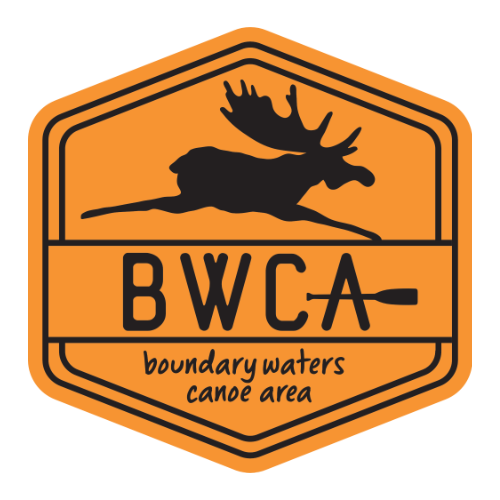




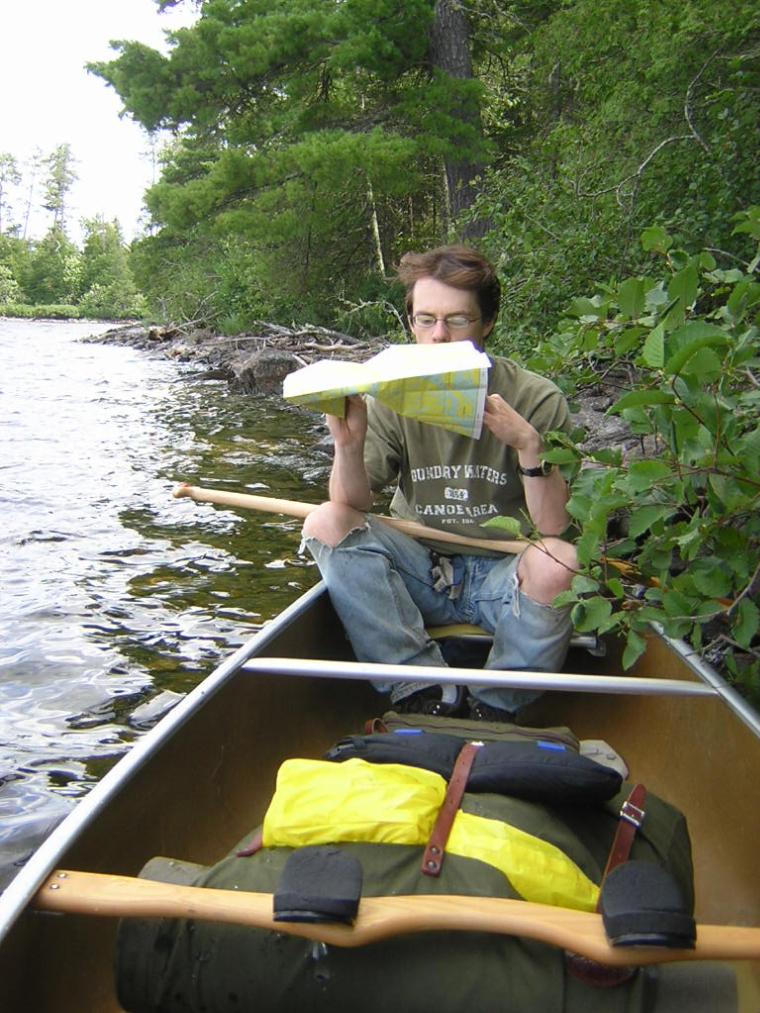
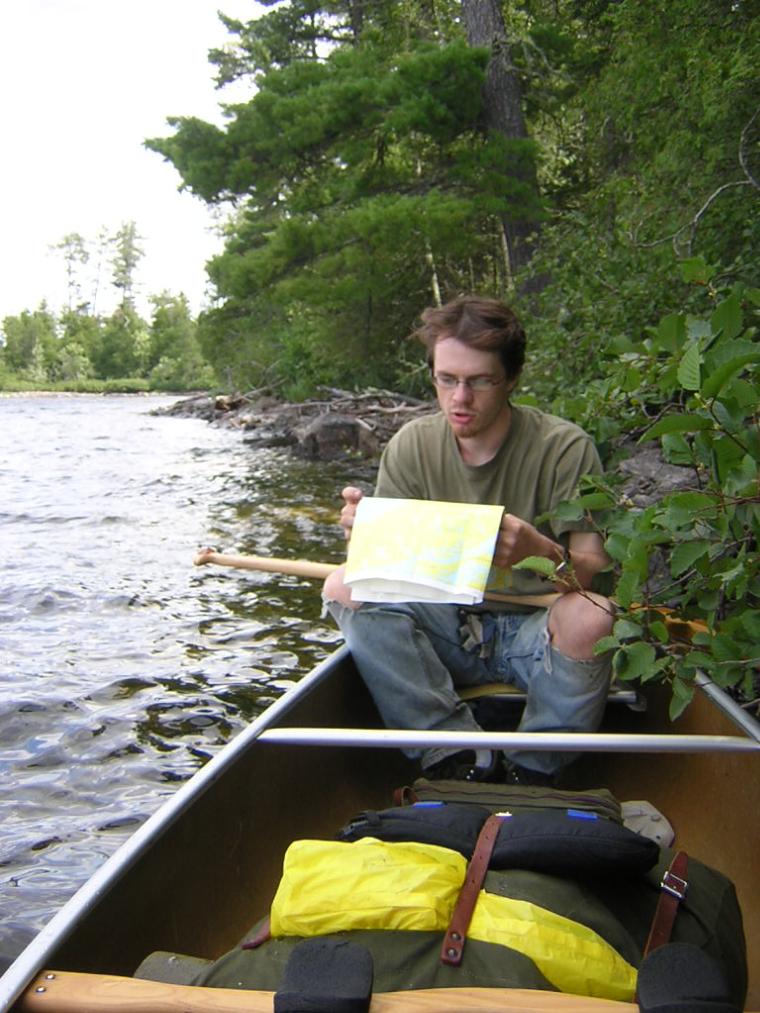



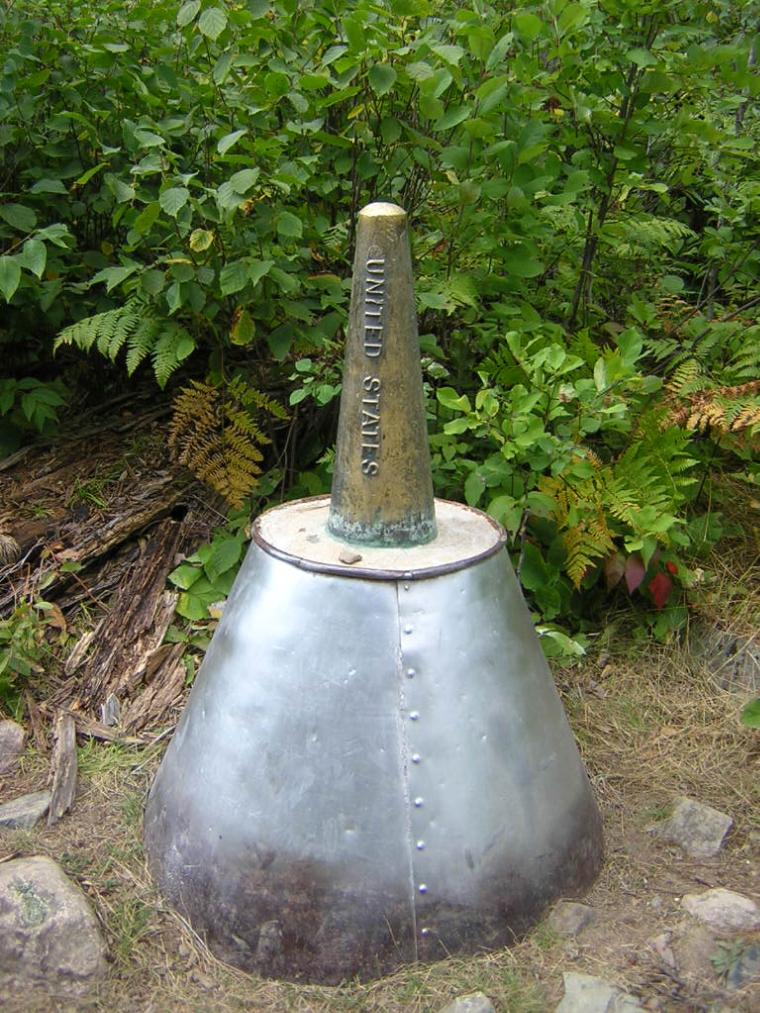

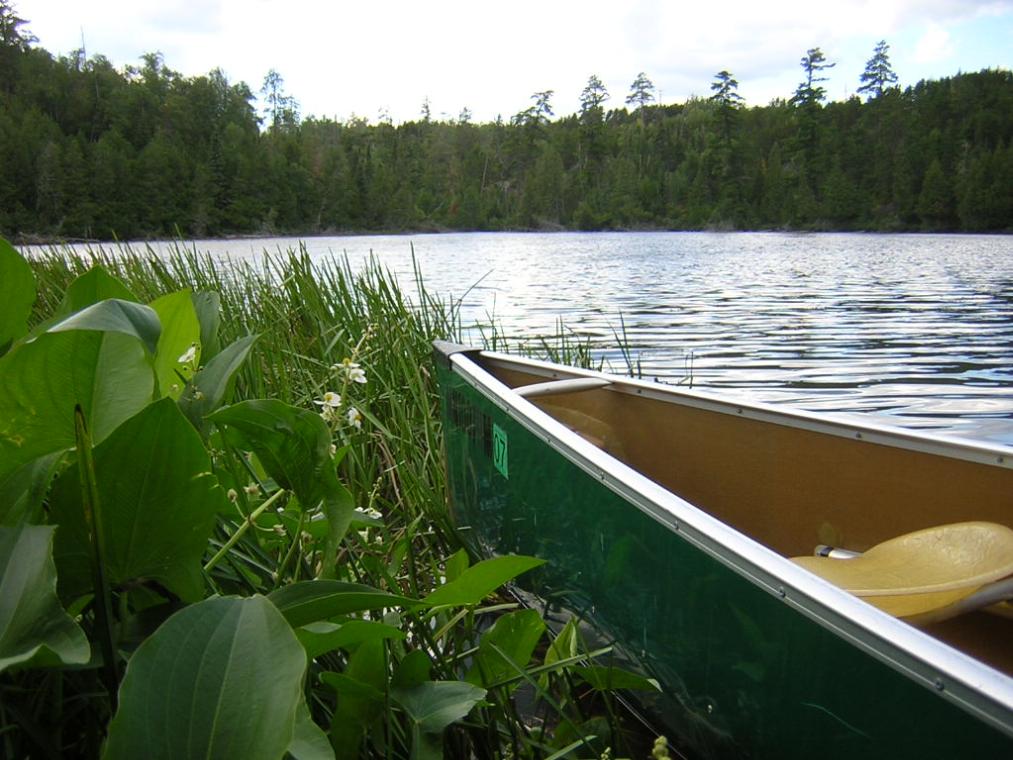


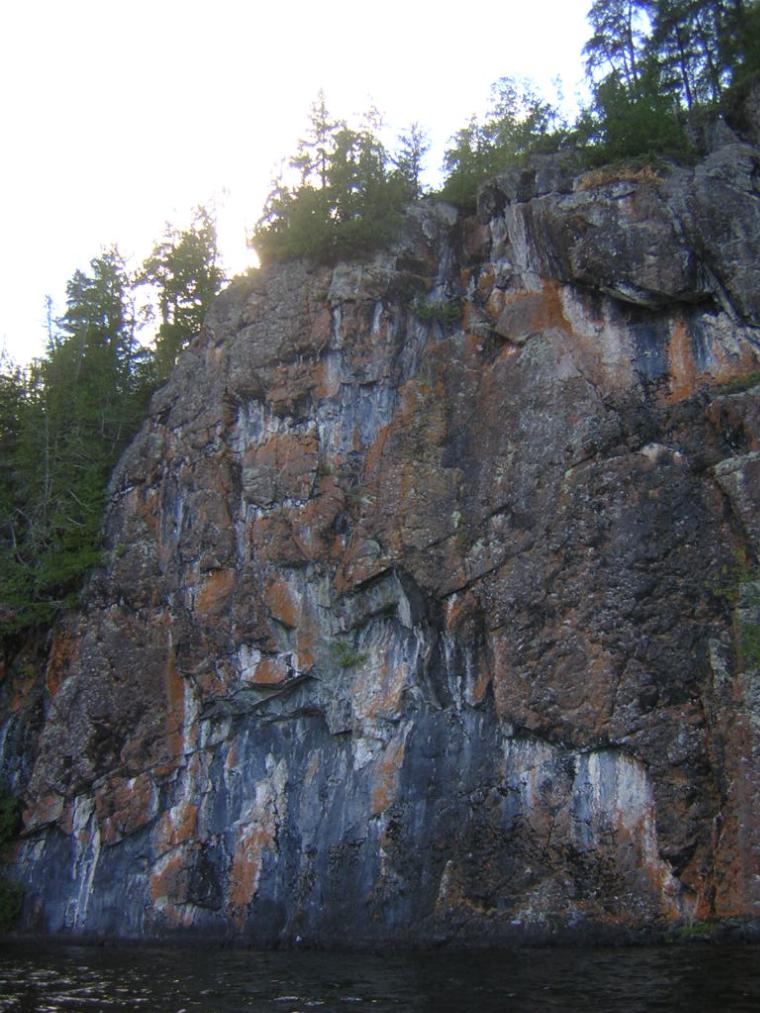
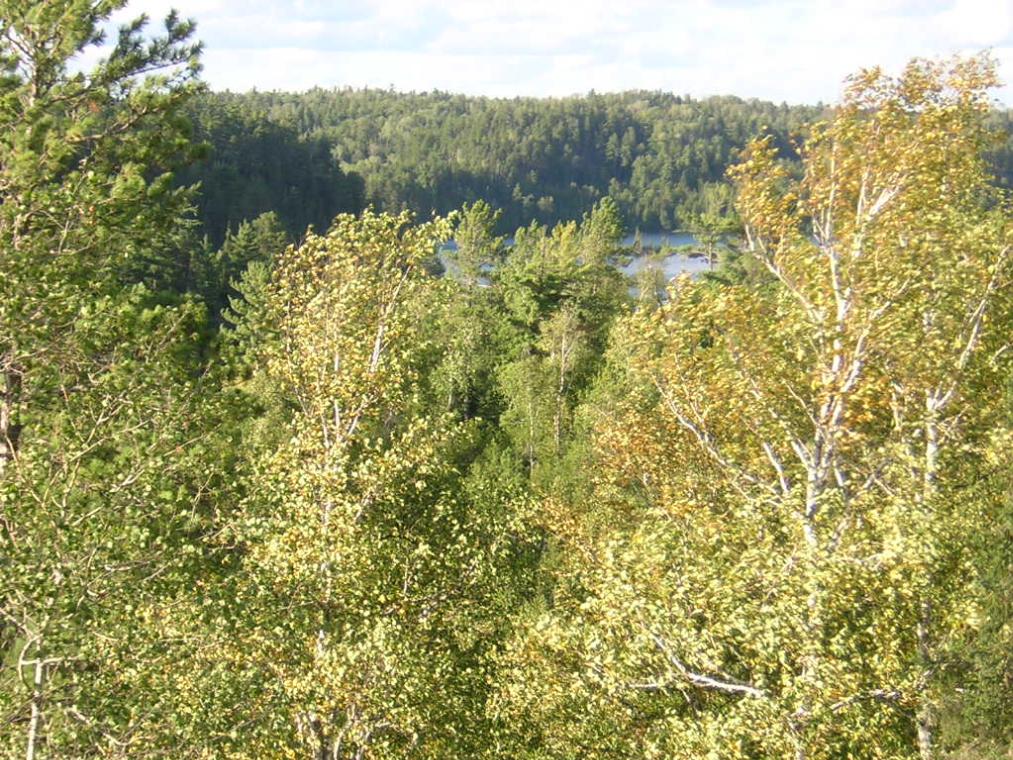
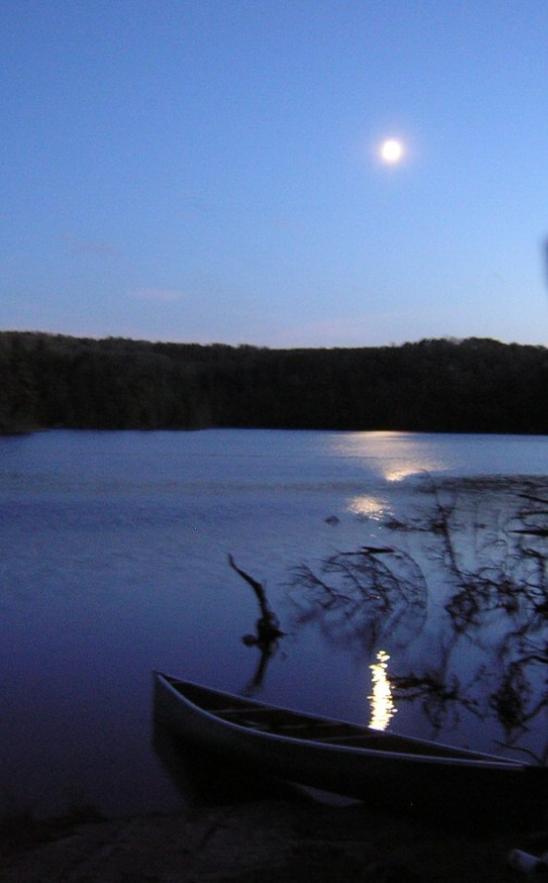
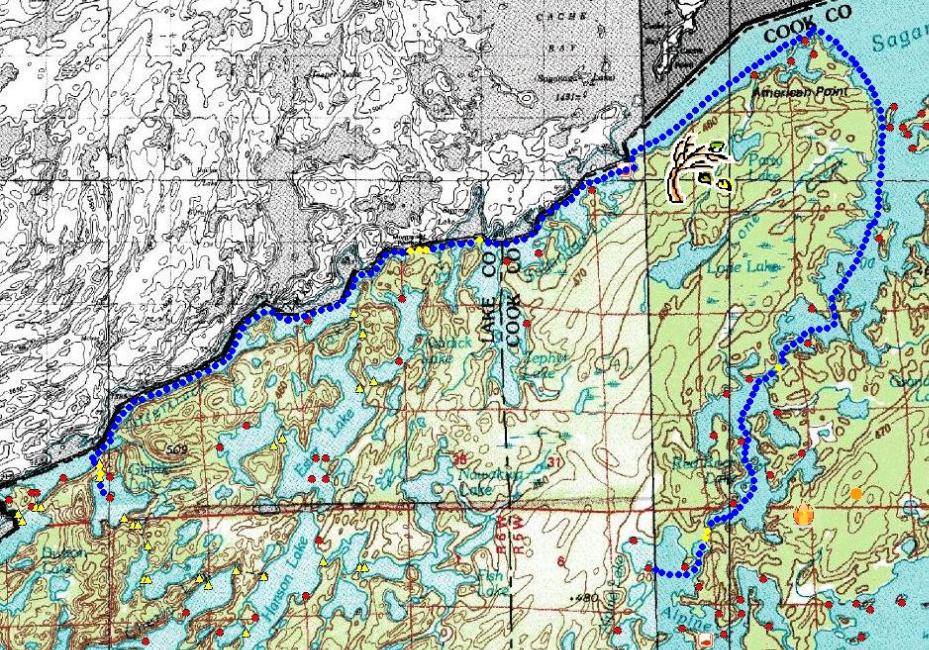
 Donate - BWCA.com
Donate - BWCA.com